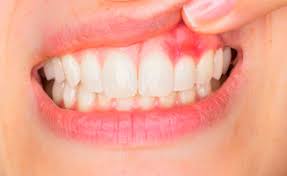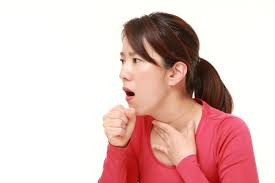Do you have a strong craving to eat non-food items? If so, you may be suffering from pica disorder. Pica is a condition that causes people to crave and eat non-food items such as dirt, paint, or ice. While the cause of pica is unknown, it is believed to be caused by a deficiency in certain minerals or nutrients. In this blog post, we will discuss the symptoms of pica disorder and how you can treat it!
Contents
What Is Pica Disorder?
 Pica disorder is described as an eating disorder where people compulsively eat things that are not food. It is believed that pica is a way of self-soothing or coping with stress. They eat things that are not edible and can cause further health problems.
Pica disorder is described as an eating disorder where people compulsively eat things that are not food. It is believed that pica is a way of self-soothing or coping with stress. They eat things that are not edible and can cause further health problems.
This might seem like a joke, but pica can be a very serious disorder. It can lead to malnutrition and even death. Pica often occurs in children, but it can also occur in adults. It is more common in people with developmental disabilities and mental retardation. Pica can also occur during pregnancy.
However this disorder is treated, the goal is to stop the person from eating non-food items and to make sure they are getting the nutrition they need. In fact, the prevalence of this condition is not known because many people with pica do not seek treatment. They feel like they can’t control their urge to eat these things or they’re embarrassed.
Therefore, if you think you or someone you know has pica, it’s important to seek help from a mental health professional. If you seem to avoid seeking professional help, there are some things that you can do on your own to try to stop the disorder. So read on to find out more about this fascinating but dangerous disorder.
What Are The Signs of Pica?
The signs and symptoms of pica disorder might vary depending on the person. Some people with pica might not have any symptoms, while others might experience:
Cravings for non-food items
This is one of the most common symptoms of pica. People with pica might crave items that are not edible, such as:
- Dirt
- Paint chips
- Hair
- Soil
- Ice
- Clay
- Chalk
- Ashes
- Crumbs of paper or cardboard
These things can often be found in the person’s environment. A person with pica disorder should see a doctor if they have these cravings. For example, if a person continuously eats dirt, they might develop an infection.
Different eating habits
Along with cravings for dirt and other non-food items, people with pica may also have an aversion to certain foods or practice different eating habits. For example, some people with pica may only eat one type of food, while others may eat large amounts of food at one time. It is also believed that pica may be a way for people to cope with stress or other psychological issues.
Digestive problems
This sign seems obvious when you think about it. If a person is eating non-food items, they’re probably not getting the nutrients they need from regular food. This can lead to digestive problems like constipation, diarrhea, and stomach pain. More often it is associated with anemia or low levels of iron in the blood. Pica can also be a sign of lead poisoning.
Weight loss or gain
Again, since people with pica are not getting the nutrients they need from food, they may lose weight or become malnourished. On the other hand, some people with pica eat so many non-food items that they may become overweight. In most cases, people with this disorder are suffering from weight loss. Pica has also been linked to anemia or a deficiency in red blood cells.
Mood changes
People with pica often report feeling bored, anxious, or depressed. These mood changes may be a result of the person’s lack of nutrition or because of the negative consequences of their eating habits (e.g., social isolation). They might also be a symptom of another underlying mental health condition.
Problems with teeth or gums
 It is important to see a dentist regularly to ensure that your teeth and gums are healthy. If you have pica, you may be at risk for tooth decay and gum disease. For example, if a person with pica compulsively eats ice, this can damage their teeth. And, if a child is suffering from pica, they may not be getting enough nutrients, which can lead to problems with development.
It is important to see a dentist regularly to ensure that your teeth and gums are healthy. If you have pica, you may be at risk for tooth decay and gum disease. For example, if a person with pica compulsively eats ice, this can damage their teeth. And, if a child is suffering from pica, they may not be getting enough nutrients, which can lead to problems with development.
There are a few different ways that pica can be treated. You need to talk to a professional to figure out which treatment is right for you. Because there are several treatment options and approaches available, you need to work with a professional to figure out which one will work best for you.
What Causes It?
The causes are largely unknown, but there are some theories. These include:
Mineral deficiencies are one of the most commonly accepted theories when it comes to pica. It is believed that since pica often occurs in developing countries, where diets are not as nutrient-rich, this could be a contributing factor. In fact, iron deficiency anemia has been found to be one of the most common nutritional deficiencies in pica patients.
There also could be a genetic component pica. This is because the disorder often runs in families. It’s believed that if someone has a close relative with pica, they’re more likely to develop the disorder themselves.
Finally, it’s been suggested that pica might be linked to mental health disorders like OCD or schizophrenia. This is because pica can sometimes be a symptom of these disorders. If someone has pica as a result of OCD, they might compulsively eat non-food items because they’re trying to relieve anxiety or stress.
And if someone has pica as a result of schizophrenia, they might do it because they’re experiencing hallucinations that tell them to eat non-food items. So, the condition can be really difficult to understand and even recognize that there is a problem. Thus, it is important to be aware of the symptoms and possible causes.
Is Pica An Anxiety Disorder?
 Sometimes people with anxiety disorders can develop pica as a way to ease their anxiety. Pica can also be a symptom of other mental health disorders, such as obsessive-compulsive disorder (OCD) and schizophrenia.
Sometimes people with anxiety disorders can develop pica as a way to ease their anxiety. Pica can also be a symptom of other mental health disorders, such as obsessive-compulsive disorder (OCD) and schizophrenia.
The reason why pica develops isn’t fully understood. It’s thought to be a complex combination of cultural, social, and psychological factors. Moreover, the connection with anxiety disorder seems like a chicken-and-egg situation. It’s not clear if anxiety leads to pica or vice versa.
However, one study has found that people with anxiety disorders are more likely to develop pica during periods of high stress. This suggests that anxiety may play a role in the development of pica. For example, if you’re anxious about a situation, you may start eating non-food items as a way to cope with your anxiety.
If you have pica and anxiety, treatment will usually focus on the anxiety disorder first. This is because treating the anxiety disorder should help reduce or eliminate the pica. Still, the first step should be getting an accurate diagnosis for your condition. Therefore, you will get a treatment plan as per your condition.
How Does It Impact Life?
When someone is struggling with pica disorder, it can have a significant impact on their life. Some of the common consequences are listed below:
Malnutrition
When people with pica consume non-food items, they are not getting the nutrients their body needs. This can lead to malnutrition, which can cause a whole host of problems. It is believed that pica may be more common in people who are malnourished, to begin with. Also, malnutrition can cause pica.
Gastrointestinal blockages
If someone with pica consumes something that is non-edible and indigestible, it can cause a blockage in their intestines. This is extremely dangerous and can even be life-threatening. If you think that someone you know has pica and they’ve started to experience abdominal pain, vomiting, or constipation, it’s important to seek medical help immediately.
Infections
Eating non-food items can also lead to gastrointestinal problems and infections. This is because these items are not meant to be ingested and can contain bacteria the body is not equipped to deal with. For example, if someone with pica consumes dirt, they could end up with an infection called toxoplasmosis. This infection can cause serious health problems, including brain damage.
Pregnancy complications
Pica disorder can also lead to complications during pregnancy. For example, if a pregnant woman with pica ingests lead, it could lead to her baby being born with low birth weight. Additionally, pica can also cause premature labor and delivery. So this can be difficult to manage.
Choking
 Choking is one of the complications that can occur if someone with pica ingests a non-food item. If the thing is small enough, it can become lodged in their throat and cause them to choke. This is obviously extremely dangerous and could even be fatal. For instance, if someone with pica ingests a penny, it could get lodged in their throat and block their airway.
Choking is one of the complications that can occur if someone with pica ingests a non-food item. If the thing is small enough, it can become lodged in their throat and cause them to choke. This is obviously extremely dangerous and could even be fatal. For instance, if someone with pica ingests a penny, it could get lodged in their throat and block their airway.
If you think that you or someone you know may have pica disorder, it’s important to seek professional help. Pica disorder is a serious condition that can lead to dangerous consequences. Fortunately, there are treatment options available that can help you recover.
How To Diagnose It?
The diagnosis is made by a professional after taking into account the medical history of the person, and through different tests that help rule out other causes for the cravings. These include:
- Physical exams: This is to rule out any medical problems that could be causing the cravings.
- Lab tests: These are to check for anemia or other nutritional deficiencies.
- Psychological evaluations: This is to rule out other mental health disorders that could be causing the cravings.
A person with pica will likely have low iron or zinc levels in their blood. They may also have lead poisoning. And it is not uncommon for people with this disorder to have other mental health disorders such as autism, intellectual disability, or schizophrenia.
The process of diagnosis is important because pica can be a symptom of another underlying medical condition. So, it is important to rule out other possible causes before making a diagnosis of pica. When you are diagnosed with pica, your doctor will likely recommend treatment options that can help you stop the cravings and improve your overall health.
Can Pica Disorder Be Treated?
Although it might seem like a child with pica is just going through a phase, it’s important to take the disorder seriously. If left untreated, pica can lead to serious health problems. The good news is that pica disorder can be treated. Here are a few treatment options:
Cognitive behavioral therapy
This type of therapy can help a child learn new ways of coping with their urges. CBT aims to help the child understand why they are engaging in pica and how to stop. For example, a therapist might help a child with pica disorder to find other ways to cope with boredom or stress. It is also important to address any underlying mental health issues that may be contributing to the pica behavior.
Family therapy
This type of therapy can help families to better understand and support their child with pica disorder. It is believed that pica disorder is often caused by a combination of genetic and environmental factors, so family therapy can be very helpful in addressing both. It will work through the family dynamics that might be contributing to the disorder and also provide support and guidance on how best to manage it.
Medication
In some cases, medication may be necessary to help treat pica disorder. For example, if the person has anemia or another medical condition that is causing their pica disorder, then treating that underlying condition may help lessen the symptoms of pica. Additionally, there are some psychiatric medications that have been shown to be effective in treating pica disorder, though more research is needed in this area. If you think that medication may be right for you or someone you know, then talk to a doctor or mental health professional to see if it is an option.
Nutritional counseling
 This is important because people with pica often have poor diets and may not be getting the nutrients they need. A counselor can help them figure out what to eat and make sure they are getting enough of the right nutrients. Moreover, it can help them develop healthy eating habits. People should understand that pica is a disorder and not simply a quirky eating habit. It can be harmful and even deadly if someone consumes something that is poisonous or sharp.
This is important because people with pica often have poor diets and may not be getting the nutrients they need. A counselor can help them figure out what to eat and make sure they are getting enough of the right nutrients. Moreover, it can help them develop healthy eating habits. People should understand that pica is a disorder and not simply a quirky eating habit. It can be harmful and even deadly if someone consumes something that is poisonous or sharp.
Self-help
Along with professional help, there is a lot you can do to ease pica cravings and improve your overall health.
- Start by ensuring you’re getting enough nutrients, especially iron, zinc, and calcium. These minerals are important for proper growth and development, so a deficiency can lead to cravings for non-food items.
- You should also avoid triggers that may make your cravings worse. For example, if you tend to crave dirt when you’re stressed, try to find other ways to relax, such as yoga or meditation.
- Managing your lifestyle is an important part of treating pica. If you have other mental health conditions, such as anxiety or OCD, make sure to treat those as well.
- Try to distract yourself when cravings strike. This can be anything from reading a book to going for a walk. And you can also help ease cravings by chewing on sugar-free gum or eating crunchy foods, like carrots or celery.
If you have pica, it’s important to talk to your doctor or mental health professional. They can help you develop a treatment plan that will work for you. With the right help, you can ease your cravings and live a healthy, fulfilling life. So try to seek help today!
Conclusion
To conclude, pica disorder is a disorder where people crave and eat non-food items. It can be caused by a deficiency in certain minerals, stress, anxiety, or OCD. You can do many things to ease cravings and improve your overall health. And if you have pica, it’s essential to seek professional help so you can develop a treatment plan that works for you.
However, you should also keep in mind that pica is not always a sign of a disorder. In some cultures, eating non-food items is considered normal and even healthy. So you should get an accurate diagnosis and then seek treatment.
For more information and tips you can contact Therapy Mantra. We have a team of professional therapists who can provide you with the support and guidance you need to recover from this condition. Contact us today to learn more about our services. You can also book an online therapy session or download our free Android or iOS app.


